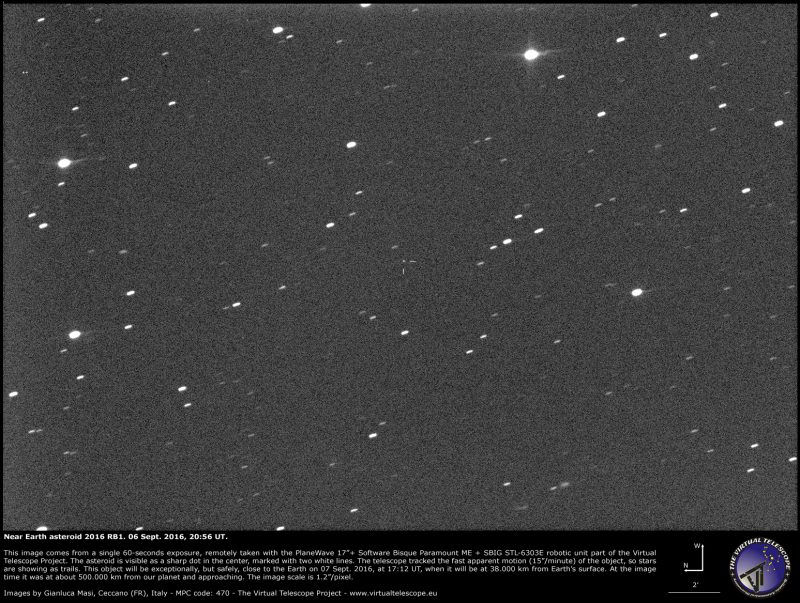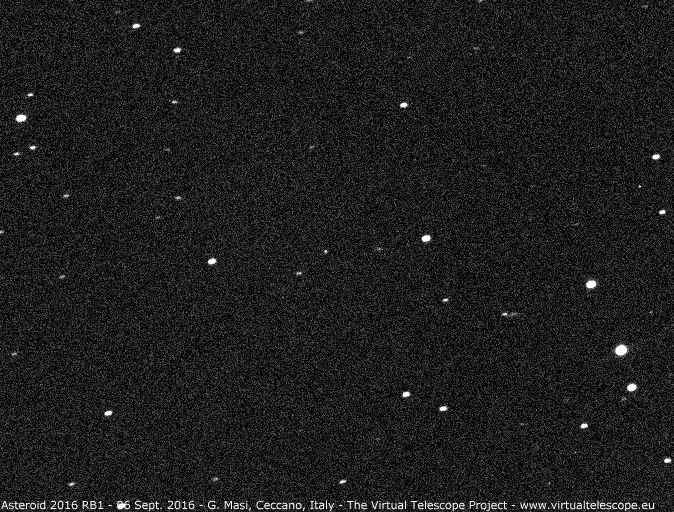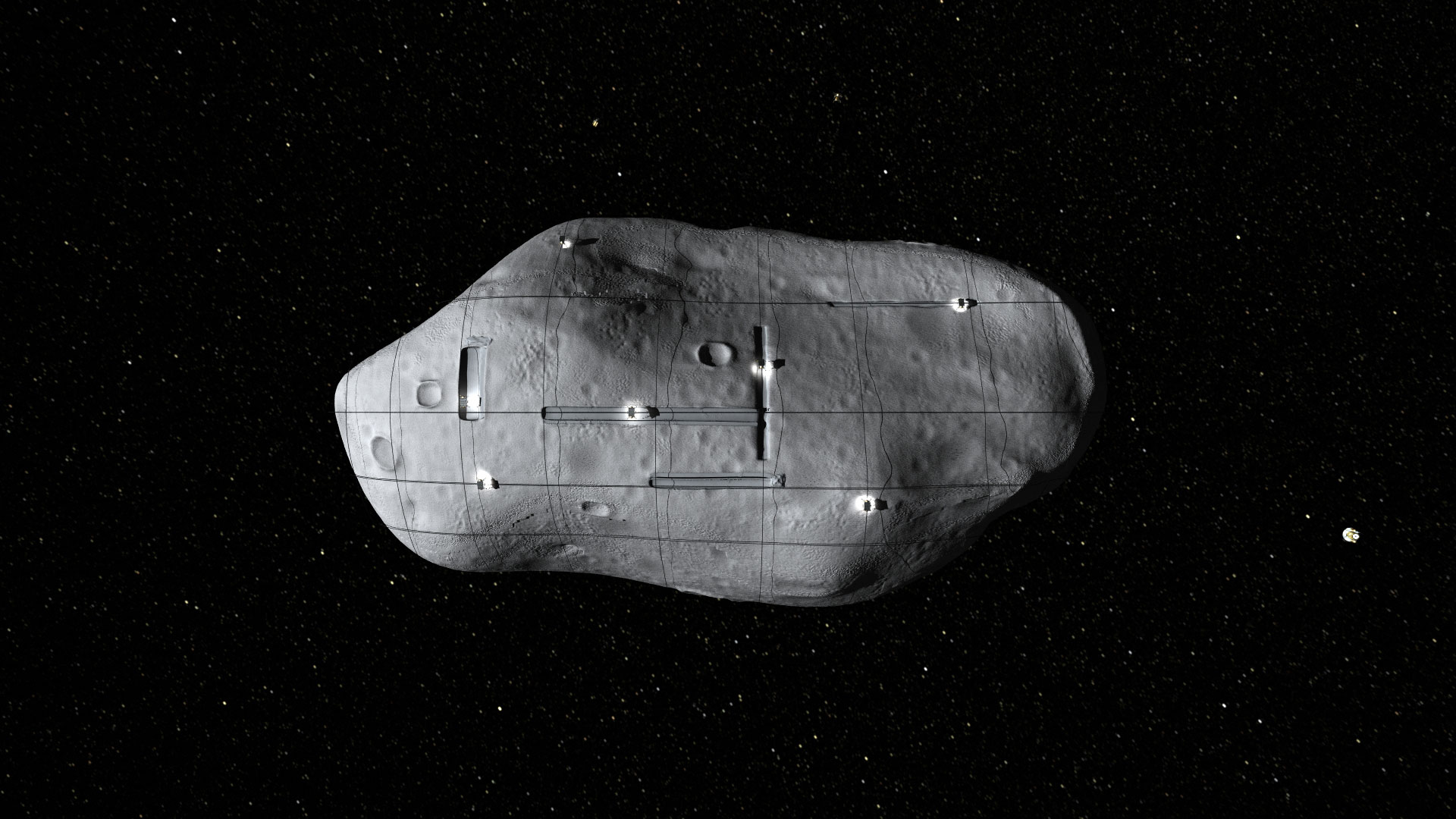A Bus-Size Asteroid Just Gave Earth a Close Shave

An asteroid the size of a school bus buzzed by Earth today (Sept. 7) in an exceptionally close — but safe — flyby. Scientists discovered the object on Monday, just two days before its encounter with Earth.
The newfound asteroid, named 2016 RB1, is between 13 and 46 feet (4 to 14 meters) wide. The space rock made its closest approach to Earth at 1:28 p.m. EDT (1728 UTC). According to NASA's Near Earth Object Program, RB1 zoomed past Earth at a relative speed of over 18,000 mph (8.13 km/s) and passed within 23,900 miles (38,463 kilometers) of the Earth's surface. This is only one-tenth the average distance between Earth and the moon.
The rock came particularly close to Earth's communication satellites, which orbit at an altitude of 22,300 miles (35,900 km). But there was no need for panic — scientists tracking the asteroid said there is no risk of impact, according to a report from EarthSky.
Astronomers first spotted the asteroid using the Mount Lemmon Survey's 60-inch (1.5 m) Cassegrain telescope at the University of Arizona. Observers in the Southern Hemisphere could catch a glimpse of the speeding asteroid with the help of a telescope, but the object was too dim to see with the naked eye. Gianluca Masi of the Virtual Telescope Project in Italy captured images of the asteroid's approach on Tuesday (Sept. 6) and created an animation of the object's motion.

Asteroid 2016 RB1 belongs to a group of space rocks called Atens. This group of near-Earth objects (NEOs) orbits the inner solar system, occasionally crossing paths with the orbits of the inner planets — Earth, Mars, Venus and Mercury.
While the newfound asteroid poses no threat to the planet, it is not the first asteroid to whiz by the Earth within the moon's orbit in the last month. Last Sunday (Aug. 28) an even bigger asteroid named 2016 QA2 flew within 50,000 miles (80,000 kilometers) of Earth. NASA and other organizations are actively scanning the sky for asteroids to track their movements and help predict when they will venture close to Earth.
Asteroids are fascinating for lots of reasons. They contain a variety of valuable resources and slam into our planet on a regular basis, occasionally snuffing out most of Earth's lifeforms. How much do you know about space rocks?
Sign up for the Live Science daily newsletter now
Get the world’s most fascinating discoveries delivered straight to your inbox.
Asteroid Basics: A Space Rock Quiz

Even if asteroid 2016 RB1 had hit the Earth, it would not have been big enough to cause a catastrophe. By contrast, the Chelyabinsk meteor that exploded over Russia in 2013 started out as an asteroid bigger than asteroid 2016 RB1, with a diameter of about 56 feet (17 m). While falling debris from that explosion injured more than 1,000 people, no one died during this dangerously close encounter. An Earthbound asteroid would need to be at least 30 times the size of asteroid 2016 RB1 to cause an impact like the asteroid that wiped out the dinosaurs.
Email Hanneke Weitering at hweitering@space.com or follow her @hannekescience. Follow us @Spacedotcom, Facebook and Google+. Original article on Space.com.

Hanneke Weitering is an editor at Liv Science's sister site Space.com with 10 years of experience in science journalism. She has previously written for Scholastic Classroom Magazines, MedPage Today and The Joint Institute for Computational Sciences at Oak Ridge National Laboratory. After studying physics at the University of Tennessee in her hometown of Knoxville, she earned her graduate degree in Science, Health and Environmental Reporting (SHERP) from New York University. Hanneke joined the Space.com team in 2016 as a staff writer and producer, covering topics including spaceflight and astronomy.











